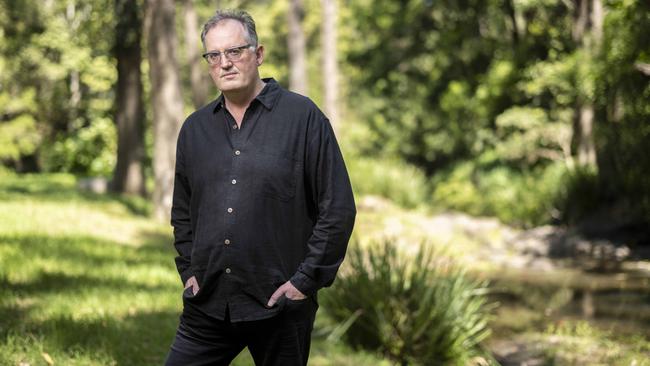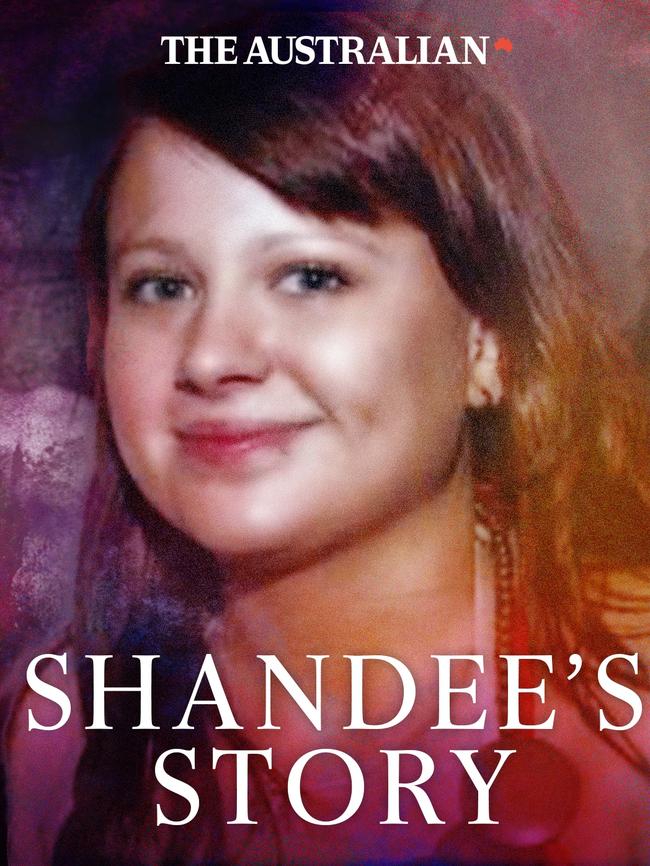Shandee’s Story podcast from Hedley Thomas is a study of forensic journalism
When Hedley Thomas finishes his new podcast, Shandee’s Story, he estimates he will have written the equivalent of two books.

When his new investigative podcast series delving into the unsolved murder of Shandee Blackburn finishes, Hedley Thomas estimates he will have written some 170,000 words across a dozen episodes, each running a minimum of an hour.
It’s the equivalent of two books – or two PhD theses.
“It is probably the most exhaustive treatment that you can give one major story in journalism,” Thomas says from his Brisbane home, where he is writing and recording episodes in a makeshift studio he set up in his now-adult son’s former bedroom.
“There isn’t another way in journalism that I know of to try to painstakingly analyse and investigate these important stories.”
Thomas’s first podcast series, The Teacher’s Pet, examining the disappearance of Lyn Dawson from Sydney’s northern beaches, spanned 16 episodes and went to No.1 on podcast charts globally. It was downloaded more than 60 million times and earned him a swag of awards.
He followed it up with The Night Driver, investigating the disappearance of 31-year-old retail worker Janine Vaughan from Bathurst, NSW, in December 2001.

The new series, Shandee’s Story, will look at the exhaustive police murder investigation and workings of the criminal justice system – how a jury could acquit Shandee’s former boyfriend John Peros of murder in less than two hours, while a coroner could later find Peros was in fact the killer. Peros denies it.
While Thomas is regularly approached to look into injustices, he came across the case by chance while surfing the internet.
“There are lots of incredibly important stories that need to be properly told as long-form podcast investigations,” he says.
“But I feel privileged to be doing this story and fortunate that I’ve got it, because it is an incredible case. It’s become apparent to me how extraordinary it is as I’ve gone through the many twists and turns in it.”

Some parts will be completely new to Shandee’s family, and probably police.
“Those things may make an important difference in this case,” he says. “Time will tell.”
Thomas, 54, went straight from high school to a Gold Coast Bulletin newspaper cadetship and has since had a celebrated career, one of only two people to win two Gold Walkleys.
After breaking stories on the fraudulent registration and gross negligence of Bundaberg Base Hospital surgeon Jayant Patel, he exposed bogus terror-related accusations against Mohamed Haneef and the contributions of Wivenhoe Dam management to the 2011 flooding of Brisbane.
Outlets for stress relief include the beach, racecourses, walking trails and his local tavern, where staff have been known to sometimes have to visit the safe to pay out his horseracing wagers (Thomas declines to comment when asked about losses, insisting stories about losses are generally boring and deflating).
A part-time worker there was good friends with a second-year University of Queensland journalism student, Isaac Irons, and introduced them in April. Irons has since had an enviable introduction to journalism, immersing himself as a researcher in Shandee’s Story.
As with his two previous series, Thomas has prepared some episodes in advance but is always ready to pivot and change the script to add new witnesses and fresh facts.
Thomas says he believes the age of clickbait, contracted news cycles and the distractions and shallowness of social media have created a hunger and yearning for carefully-told podcast investigations.
“I think it will continue to burgeon, in part because they can make a difference with the discovery of new evidence. And in many interviews as well as factual descriptions of evidence, there‘s a truth and an authenticity in podcasts that people hear and respond to,” he said.



